European Travel Information and Authorisation System
The European Travel Information and Authorisation System (ETIAS) is a planned electronic authorisation system of the European Union for visa-exempt visitors travelling to the European Union or the Schengen Area (including EFTA countries), as well as Bulgaria, Cyprus, and Romania[1] with the exception of Ireland, which is part of the Common Travel Area. It is expected to become operational in May 2025, although officials note the possibility of delays.[2]
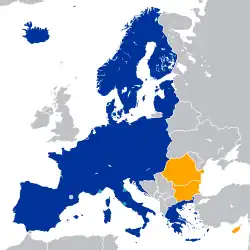 Map of Europe Schengen Area Countries with open borders but not part of the Schengen Area or the EU Members of the EU legally obliged to join the Schengen Area, but not yet members | |
| Policy of | |
|---|---|
| Type | Electronic travel authorisation system area |
| Expected implementation | May 2025 |
| Applicable countries | 30 countries +4 countries and 1 territory indirectly
|
According to the EC, it is implemented "for the identification of security, irregular migration or high epidemic risks posed by visa-exempt visitors."[3]
ETIAS was first proposed by the European Commission in 2016[4] and was formally established by Regulation (EU) 2018/1240 of the European Parliament and of the European Council of 12 September 2018.[5][6]
Similar systems
ETIAS will be similar to other electronic travel authorisation systems such as:
- Electronic System for Travel Authorization (ESTA) in the United States[7]
- Electronic Travel Authority in Australia
- Electronic Travel Authorization in Canada
- New Zealand Electronic Travel Authority in New Zealand
- Electronic Travel Authorisation in the United Kingdom (Planned)
Applicable nationalities
ETIAS is a travel authorization to enter 30 European countries, including the 27-country Schengen Area, and Bulgaria, Romania and Cyprus; it is not a visa,[8] and it does not guarantee entry.[9] Ireland is the only EU member state that continues to have its own visa policy and does not plan to join the Schengen Area or to require ETIAS.[10]
Visitors who have dual nationality of an EU or Schengen country and of a visa-exempt country (for example, Italy and Canada) will not need ETIAS travel authorisation if they hold a travel document from the EU or Schengen country.[11][12] Therefore, travelers who do not need an ETIAS travel authorisation are nationals of one of the 30 European countries, including the 27-country Schengen Area, and Bulgaria, Romania and Cyprus requiring ETIAS.[12]
As of entering into use, ETIAS will be required from nationals of visa-exempt third countries (Annex II)[13] except the European microstates of Andorra, Monaco, San Marino and Vatican City. It will also be required from family members of EU or Schengen nationals not holding a residence card indicating that status. However, ETIAS will not be required from family members holding such a card; from holders of visas, residence permits, local border traffic permits or refugee or stateless travel documents issued by an EU or Schengen country; from crew members; from holders of diplomatic or official passports; or from airport transit passengers.[5]
As of 2023, holders of ordinary passports of the following countries and territories, without a travel document from an EU or Schengen country, would match the ETIAS criteria:
 Albania
Albania Antigua and Barbuda
Antigua and Barbuda Argentina
Argentina.svg.png.webp) Australia
Australia Bahamas
Bahamas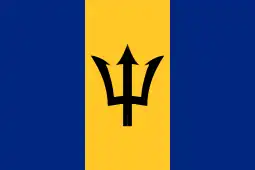 Barbados
Barbados Bosnia and Herzegovina
Bosnia and Herzegovina Brazil
Brazil Brunei
Brunei.svg.png.webp) Canada
Canada Chile
Chile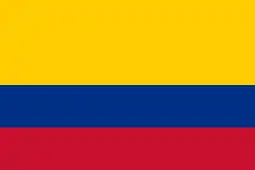 Colombia
Colombia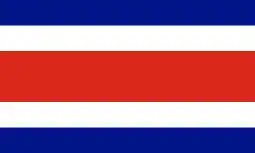 Costa Rica
Costa Rica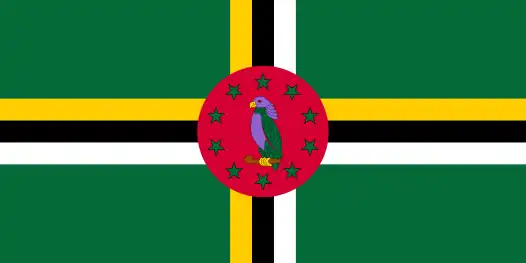 Dominica
Dominica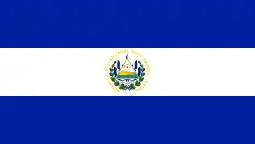 El Salvador
El Salvador Georgia
Georgia Grenada
Grenada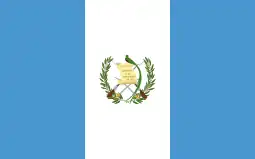 Guatemala
Guatemala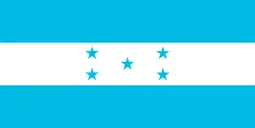 Honduras
Honduras Hong Kong
Hong Kong Israel
Israel Japan
Japan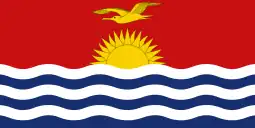 Kiribati
Kiribati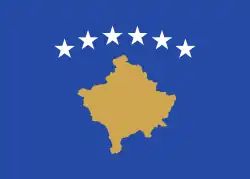 Kosovo[14]
Kosovo[14] Macau
Macau Malaysia
Malaysia Marshall Islands
Marshall Islands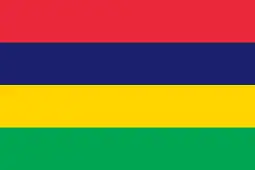 Mauritius
Mauritius Mexico
Mexico Micronesia
Micronesia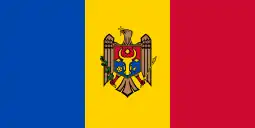 Moldova
Moldova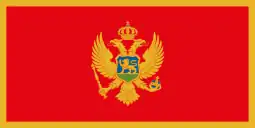 Montenegro
Montenegro New Zealand
New Zealand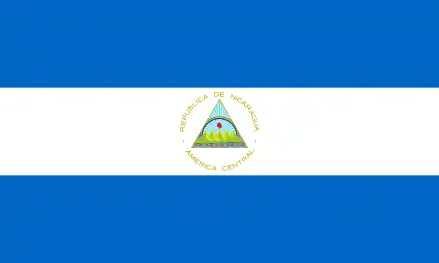 Nicaragua
Nicaragua North Macedonia
North Macedonia Palau
Palau Panama
Panama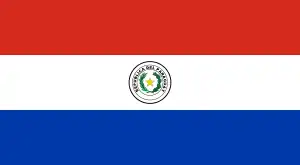 Paraguay
Paraguay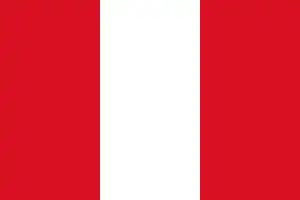 Peru
Peru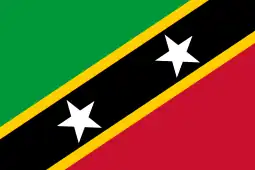 Saint Kitts and Nevis
Saint Kitts and Nevis Saint Lucia
Saint Lucia Saint Vincent and the Grenadines
Saint Vincent and the Grenadines Samoa
Samoa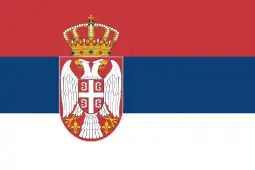 Serbia
Serbia Seychelles
Seychelles Singapore
Singapore Solomon Islands
Solomon Islands South Korea
South Korea Taiwan
Taiwan Timor Leste
Timor Leste Tonga
Tonga Trinidad and Tobago
Trinidad and Tobago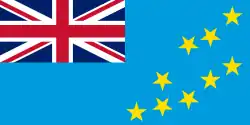 Tuvalu
Tuvalu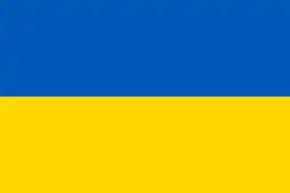 Ukraine
Ukraine United Arab Emirates
United Arab Emirates United Kingdom[lower-alpha 13]
United Kingdom[lower-alpha 13] United States
United States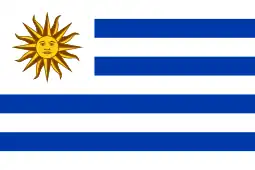 Uruguay
Uruguay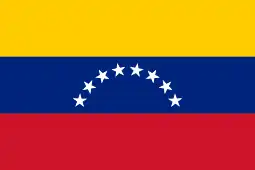 Venezuela
Venezuela
Application process
All prospective visitors will need to complete an online application and a €7 fee will be required from those between ages 18 and 70.[15] It is estimated that 1.4 billion people will need to apply.[9] The system is expected to process the vast majority of applications automatically by searching in electronic databases and providing an immediate response, but in some limited cases it may take up to 30 days.[16][1] If approved, the authorisation will be valid for three years or until the expiry date of the travel document, whichever is earlier.[1]
See also
Notes
- Excluding Northern Cyprus.
- Including the Faroe Islands and Greenland, which are outside the Schengen Area but maintain travel without border control with the Schengen Area and use the same list of visa-exempt nationalities.
- Including Åland.
- Excluding Overseas France.
- Excluding the Dutch Caribbean.
- Excluding Svalbard and dependencies.
- Including Azores and Madeira.
- Including the Canary Islands, Ceuta, Melilla and plazas de soberanía.
- Maintains open borders with Cyprus and applies the same visa requirements.
- Accessible only from the Schengen Area, with controlled borders.
- Accessible only from the Schengen Area, with open borders, or by sea with the same visa requirements.
- Accessible only from the Schengen area.
- Including all classes of British nationality.
References
- "Security union: A European Travel Information and Authorisation System – Questions & answers". European Commission. 5 July 2018. Archived from the original on 31 December 2019. Retrieved 14 August 2021.
- GOEL, ANUSHKA (22 September 2023). "ETIAS, Europe's Travel Document For Visa-Exempt Countries, Will Now Launch In 2025". Travel + Leisure. Archived from the original on 27 September 2023. Retrieved 22 September 2023.
- "Schengen, borders and visa". Europa. 23 November 2022. Archived from the original on 4 August 2023. Retrieved 4 August 2023.
- "Communication from the commission to the European Parliament and the Council, Stronger and Smarter Information Systems for Borders and Security". Europa. 6 April 2016. Archived from the original on 11 September 2023. Retrieved 22 September 2023.
- "Official Journal of the European Union, L 236, Volume 61, English Edition". Europa. 19 September 2018. Archived from the original on 15 August 2021. Retrieved 15 August 2021.
- "Security union: A European Travel Information and Authorisation System – Questions & answers". Europa. 5 July 2018. Archived from the original on 31 December 2019. Retrieved 15 August 2021.
- "US citizens will need to register to visit parts of Europe starting in 2021". CNN. 9 March 2019. Archived from the original on 9 March 2019. Retrieved 15 August 2021.
- "Precisiones acerca de ETIAS, el registro de viaje a Europa que aplicará a partir de 2023 | EEAS". Europa. Archived from the original on 9 September 2023. Retrieved 9 September 2023.
- Chung, Christine (3 August 2023). "The E.U.'s New ETIAS Entry Requirement Is Coming. Someday". The New York Times. Archived from the original on 4 August 2023. Retrieved 4 August 2023.
- "Will you need a visa to visit Ireland in 2021?". IrishCentral. 8 March 2019. Archived from the original on 9 March 2019. Retrieved 15 August 2021.
- "Frequently asked questions about ETIAS". Europa. Archived from the original on 18 June 2023. Retrieved 1 January 2023.
- "Who should apply – Who does not need an ETIAS travel authorisation". Europa. Archived from the original on 28 June 2023. Retrieved 2 September 2023.
- Regulation (EU) 2018/1806 of the European Parliament and of the Council of 14 November 2018 listing the third countries whose nationals must be in possession of visas when crossing the external borders and those whose nationals are exempt from that requirement OJ L 303, 28 November 2018, pp. 39–58 Archived 26 December 2018 at the Wayback Machine
- Regulation (EU) 2023/850 of the European Parliament and of the Council of 19 April 2023 amending Regulation (EU) 2018/1806 listing the third countries whose nationals must be in possession of visas when crossing the external borders and those whose nationals are exempt from that requirement (Kosovo (This designation is without prejudice to positions on status, and is in line with UNSCR 1244/1999 and the ICJ Opinion on the Kosovo declaration of independence.)), EUR-Lex, 25 April 2023.
- "ETIAS, what it means for travellers; what it means for Frontex". Frontex. Archived from the original on 25 September 2023. Retrieved 22 September 2023.
- "Brexit: No visa but Britons will pay €7 to travel to EU countries". BBC. 14 December 2018. Archived from the original on 14 December 2018. Retrieved 14 August 2021.